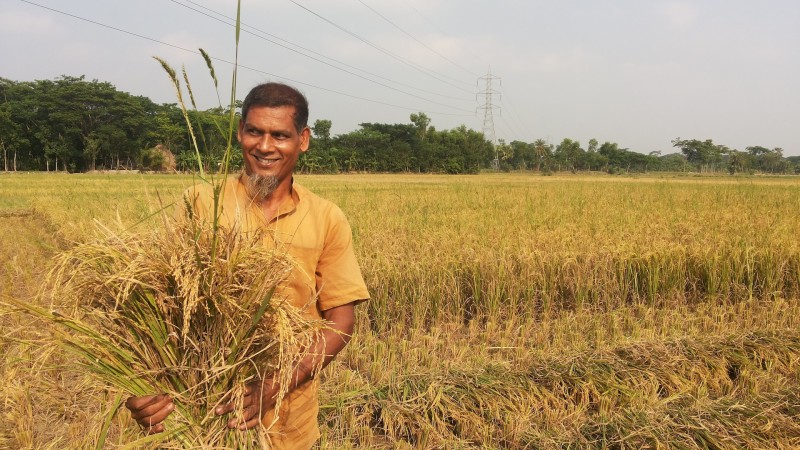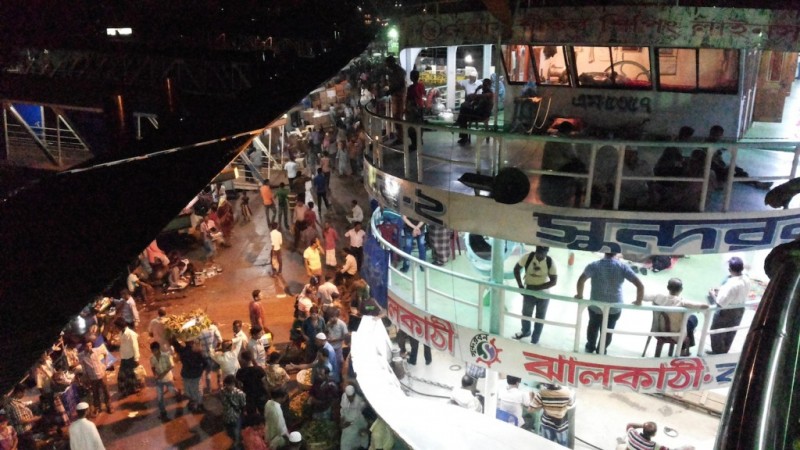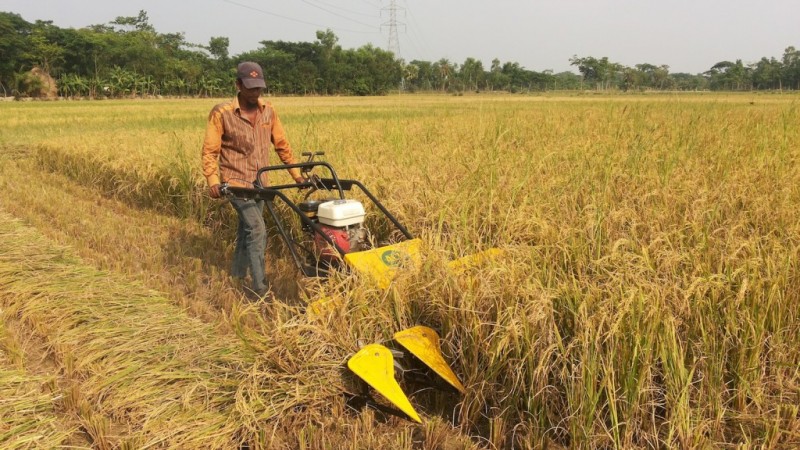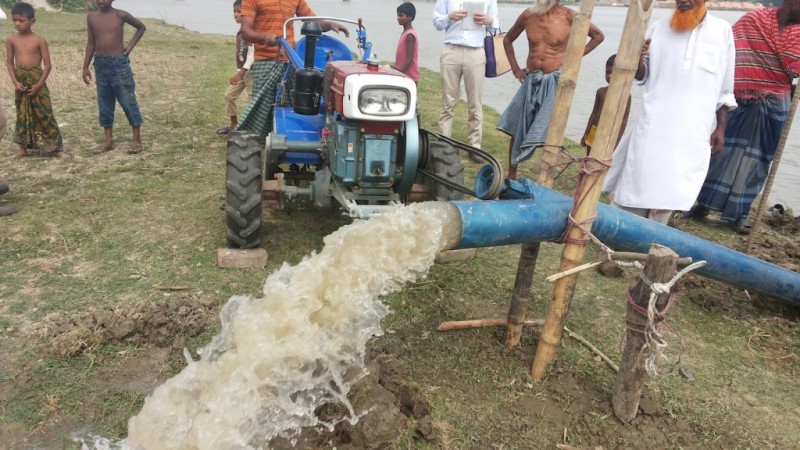REPORT May 21, 2014
Mechanization and Market Development trigger agricultural revolution in Bangladesh: Report from Barisal vol. 1

Between May 20 and 22, 2014, we conducted a field research in Barisal city, which is located 150 km south from Dhaka city with a population of 530,000. Since Barisal is located at the tip of a triangular point of two large rivers and a soil-producing land, it is famous for agriculture productions such as rice, vegetable, and jute.
As for commuting, it is common to use a diesel ship called ‘Launch’ at the Sadar Ghat, a seaport in Dhaka. The launch departs Sadar Ghat in the evening daily, and arrives in Barisal in the morning the following day. The commute costs around 100tk, so it is common for local people as well. The members of Cocoro also used this facility for their trip to Barisal.

We arrived in Barisal after sailing for 8 hours from Dhaka city, and then visited the Madhabpasa village to observe the new introduction of reaper. In Bangladesh, agriculture work such as cultivating rice paddy with hoe or spade, planting a seeding, removing weeds from where crops or flowers grow, harvesting, threshing, and polishing has been conducted by traditional hand work because of its cheap labor cost.
The introduction of reaper boosts the production by eight-fold
However, this traditional work style which has been continuously introduced in hundreds of years now reached a paradigm shift triggered by the rise of labor cost and large rural to urban migration. The labor costs has increased four-fold in this five years even in rural area 40 minutes away from Barisal city center, which brings a wave of agricultural mechanization. And farmers gradually started to introduce agricultural machine such as cultivator and reaper.

The observed reaper is specialized on its function. It is simple and light with no extra function and no fancy design. This is made of combined Honda engine and KUBOTA’s body, both of which are Japanese famous maker. The price is Tk. 18,500 and there are 30 reapers introduced in Barisal and 200 in Bangladesh.
Axial Flow Pump: less energy consumption and high efficiency.
The wave of mechanization has surged into irrigation system as well. We visited Rakundia village one hour away from Baisal city center, which is famous for rice and Jute production.
There are quite a few amount of water required to produce rice and jute, and farmers living in the area draw water from nearby river. However, there are three problems regarding the traditional pump used in Rakudia village; bad and inefficient fuel consumption, time consuming to fill water, and lack of the volume.
By introducing Axial Flow Pump(AFP) which is popular in east south Asia, their life style changed dramatically. AFP is an inexpensive and innovative new pump that could pump large quantity of water at a gentle slope. The energy source of AFP is the engine of rice cultivator, and this reduces energy consumption by 50%.

Introduction of AFP increased the drawing rate by 70% and reduced the fuel consumption by 40%. Moreover, the coverage area of AFP is over 300m which could provide water for 40 Acres equivalent to 70 farm households.
AFP is imported from Thailand and costs tk. 26,000. The local major company is going to start the local production of AFP in the near future. So far, 200 AFPs were introduced in Bangladesh. The appropriate technology changes the work style of agriculture and lifestyle of the citizens. This is one of the successful examples of BOP business!!
